Salmon identificationBecause there are both species that you can keep and cannot keep returning to the Chilliwack River, it is important to know how to identify all five species of salmon.
Chinook salmonChinook salmon have small spots across their back and small spots across their entire tail. Their gum is black and the edge of their jaw is white. Adult chinook salmon are defined as over 62cm and are required to be recorded on your licence when you choose to keep one.
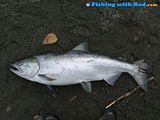 | 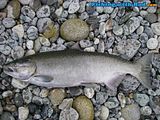 |  | 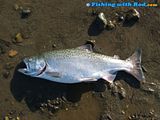 | 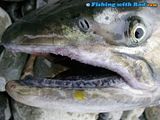 | 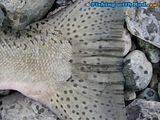 |
| Adult chinook (over 62cm) | Adult chinook (over 62cm) | Jack chinook (under 62cm) | Jack chinook (under 62cm) | Black gum with white
jaw edge | Small spots across both
upper and lower parts of tail |
Coho salmonCoho salmon have small spots across their back and spots on the top portion of their tail. Their gum is white. Two groups of coho salmon are found in the Chilliwack River - Wild and hatchery fish. Hatchery fish, which anglers are allowed to keep, do not have an adipose fin and a healed scar can be found at where the adipose fin is missing. This fin is clipped at the hatchery when they are at their juvenile stage prior to being released. If an adipose fin is present, then it is a wild fish, which is required to be released with care.
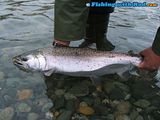 | 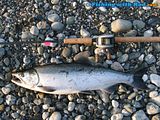 | 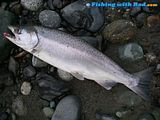 | 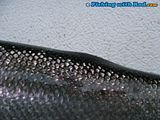 | 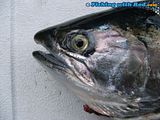 | 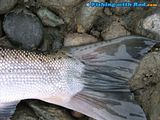 |
Wild adult coho
(with adipose fin) | Hatchery adult coho
(without adipose fin) | Hatchery jack coho
(without adipose fin) | Absence of adipose fin
with healed scar on
hatchery coho | White gum | Small spots on top portion
of tail |
Pink salmonPink salmon have large thumb-print type spots across their body and large spots across their tail. Males have a distinct humped back and their body colouration are typically dark green in the Chilliwack River.
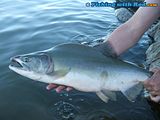 | 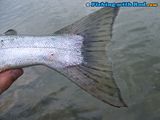 |
Male pink salmon with
hump back | Large spots across tail |
Chum salmonChum salmon have two distinct characteristics, which are colourful stripes across their body and large teeth found on males.
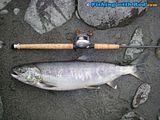 |  | 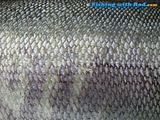 |
| Female chum salmon | Male chum salmon with
teeth | Striped back |
Sockeye salmonAlthought sockeye salmon cannot be retained on the Chilliwack River, it is important to know what they look like so you do not kill one by accident. Sockeye salmon that are returning to Cultus Lake are endangered and their recovery depends on your assistance. Sockeye salmon are typically spotless and silver until they are near the spawning ground. At spawning stage, their body colouration is red.
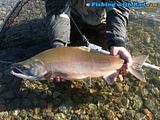 | 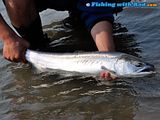 |
adult sockeye in
spawning colour | adult sockeye prior to
spawning stage |
Some thoughts on fishing locationsThe Chilliwack Vedder River is long. Some say it gets crowded, but only at certain spots. To have a good experience, it's best to avoid the busy spots. The busy spots are usually the visible ones that have easy access. These include Keith Wilson Bridge, railway bridge, Lickman Road, Peach Road, Vedder Crossing, Tamahi, Alison Pool, Limit Hole. By going to a spot where less people are fishing, the likelihood of you hooking into some quality fish is bigger since the fish are not spooked. Surprisingly, you can usually find a nice quiet spot by taking a very short walk from one of these busy spots.
Additional readingsWater condition updatesThroughout the season, members will post up water condition updates so everyone can be alerted if condition is not ideal. Please feel free to post updates in this thread after your trips. We can all benefit from each other's updates and save gasoline and cost of our season.
Please do not ask for updates. All requests will be deleted.

 Author
Topic: 2017 Chilliwack River fall salmon fishery information & water condition updates (Read 205691 times)
Author
Topic: 2017 Chilliwack River fall salmon fishery information & water condition updates (Read 205691 times)

